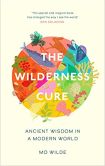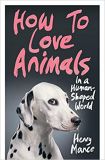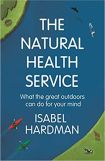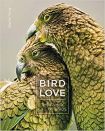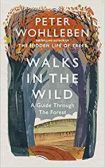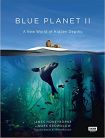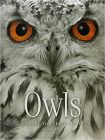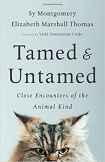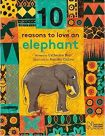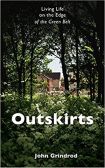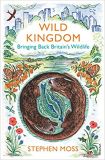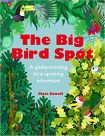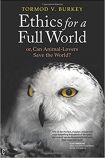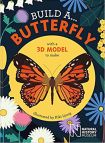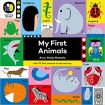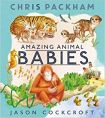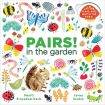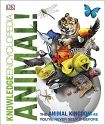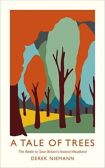Difference between revisions of "Newest Animals and Wildlife Reviews"
| Line 2: | Line 2: | ||
[[Category:New Reviews|Animals and Wildlife]] | [[Category:New Reviews|Animals and Wildlife]] | ||
[[Category:Animals and Wildlife|*]] __NOTOC__<!-- INSERT NEW REVIEWS BELOW HERE--> | [[Category:Animals and Wildlife|*]] __NOTOC__<!-- INSERT NEW REVIEWS BELOW HERE--> | ||
| + | {{Frontpage | ||
| + | |author=Lev Parikian | ||
| + | |title=Light Rains Sometimes | ||
| + | |rating=4.5 | ||
| + | |genre=Animals and Wildlife | ||
| + | |summary= If you’re a writer yourself, or an aspiring writer, or someone who pretends to write, then you know that there are unnumbered types of books. Some you read for fun, some for distraction, some for vicarious emotion, some to learn from in a random way, some for focussed research, and some because they are, broadly speaking, the kind of thing you think you might like to write. Or, indeed, are actually trying to write. | ||
| + | |isbn=1783966386 | ||
| + | }} | ||
{{Frontpage | {{Frontpage | ||
|isbn=1398508632 | |isbn=1398508632 | ||
Revision as of 18:04, 24 June 2022
Review ofLight Rains Sometimes by Lev ParikianIf you’re a writer yourself, or an aspiring writer, or someone who pretends to write, then you know that there are unnumbered types of books. Some you read for fun, some for distraction, some for vicarious emotion, some to learn from in a random way, some for focussed research, and some because they are, broadly speaking, the kind of thing you think you might like to write. Or, indeed, are actually trying to write. Full Review |
Review ofThe Wilderness Cure by Mo WildeIt had been on the cards for a while but it was the week-long consumer binge which pushed Mo Wilde into beginning her year of eating only wild food. The end of November, particularly in Central Scotland was perhaps not the best time to start, in a world where the normal sores had been exacerbated by climate change, Brexit and a pandemic. Wilde had a few advantages: the area around her was a known habitat with a variety of terrains. She had electricity which allowed her to run a fridge, freezer and dehydrator. She had a car - and fuel. Most importantly, she had shelter: this was not a plan to live wild just to live off its produce. Full Review |
Review ofThe Secret Life of Birds by Moira Butterfield and Vivian Mineker (illustrator)I have recently discovered a great pleasure: I sit and watch the vast numbers of birds which visit our garden on a daily basis. An hour can pass without my noticing. I've established which species feed from the ground, which pop to the feeders for a quick snatch of some food and who settles in for a good munch but I wish I was more knowledgeable. It would have been wonderful if, as a child, I'd had access to a book such as The Secret Life of Birds. So – what is it? Full Review |
Review ofNever Work With Animals by Gareth SteelI don't often begin my reviews with a warning but with Never Work With Animals it seems to be appropriate. Stories of a vet's life have proved popular since All Creatures Great and Small but Never Work With Animals is definitely not the companion volume you've been looking for. As a TV show the author would argue that All Creatures lacked realism, as do other similar programmes. Gareth Steel says that the book is not suitable for younger readers and - after reading - I agree with him. He says that he's written it to inform and provoke thought, particularly amongst aspiring vets. It deals with some uncomfortable and distressing issues but it doesn't lack sensitivity, although there are occasions when you would be best choosing between reading and eating. Full Review |
Review ofHow to Love Animals in a Human-Shaped World by Henry ManceWhen we do think about animals, we break them down into species and groups: cows, dogs, foxes, elephants and so on. And we assign them places in society: cows go on plates, dogs on sofas, foxes in rubbish bins, elephants in zoos, and millions of wild animals stay out there, somewhere, hopefully on the next David Attenborough series. I was going to argue. I mean, cows are for cheese (I couldn't consider eating red meat...) and I much prefer my elephants in the wild but then I realised that I was quibbling for the sake of it. Essentially that quote sums up my attitude to animals - and I consider myself an animal lover. If I had to choose between the company of humans and the company of animals, I would probably choose the animals. I insisted that I read this book: no one was trying to stop me but I was initially reluctant. I eat cheese, eggs, chicken and fish and I needed to either do so without guilt or change my choices. I suspected that making the decision would not be comfortable. Full Review |
Review ofThe Natural Health Service: How Nature Can Mend Your Mind by Isabel HardmanIsabel Hardman suffered a trauma which she chooses not to share. She says that a friend who does know, burst into tears and health-care professionals' jaws have sagged in disbelief. Hardman dealt with this at the time by 'keeping going': the next day she went to work to cover the budget, next there was the EU referendum, the political party leadership contests and then it was party conference season. One night she had to be sedated and returned home to begin long-term sick leave. That was what brought me to this book: 2020 was the year when the bins went out more often than I did. Full Review |
Review ofBird Love: The Family Life of Birds by Wenfei Tong and Mike WebsterI was a little perturbed when I looked at the blurb for Bird Love on a couple of on-line booksellers: exploring the sex life of birds it said. I very nearly passed over the book, but a closer examination suggested that the book is about the family life of birds, which is rather different. If the book was confined to the sex life of birds, you would be missing an opportunity to understand how birds live day-to-day, bring up their families and cope in the wild. Not only that, you have missed the treat of so many beautiful illustrations about a wide variety of birds which run through this book from the first page to the last. Full Review |
Review ofWalks In The Wild by Peter Wohlleben and Ruth Ahmedzai Kemp (Translator)An instruction manual for the forest is how Wohlleben's publisher described the idea for this book, and that's basically what it is – although right at the end the author says that it is not intended to be a reference book, but an appetiser. Full Review |
Review ofThe Little Book of the Dawn Chorus by Caz Buckingham and Andrea PinningtonWhat a treat! I really did mean to just glance at The Little Book of the Dawn Chorus but the pull of the sounds of a dozen different birds singing their hearts out was far too much to resist on a cold and rather wet February morning. I spent an indulgent hour or so reading all about the birds and listening to their song. Then - just because I could - I went back and did it all again and it was just as good the second time around. So, what do you get? Full Review |
Review ofBlue Planet II by James Honeyborne and Mark BrownlowYou may well remember when the sticking of a number '2' after a film title was suggesting something of prestige - that the first film had been so good it was fully justified to have something more. That has hardly been proven correct, but it has until recently almost been confined to the cinema - you barely got a TV series worthy of a numbered sequel, and never in the world of non-fiction. If someone has made a nature series about, say, Alaska (and boy aren't there are a lot of those these days) and wants to make another, why she just makes another - nothing would justify the numeral. But some nature programmes do have the prestige, the energy and the heft to demand follow-ups. And after five years in the making, the BBC's Blue Planet series has delivered a second helping. Full Review |
Review ofOwls: A Guide to Every Species by Marianne TaylorI feel like I am being watched. A huge pair of piercing orange eyes are staring right at me, locking me into their gaze. In contrast with the hardness of the deep-amber eyes, soft grey feathers fan out into the surrounding area, intricate, detailed and beautiful. An enigma; harsh and gentle at the same time, the owl is beckoning the reader to turn the pages and take a closer look inside... Full Review |
Review ofTamed and Untamed: Close Encounters of the Animal Kind by Sy Montgomery and Elizabeth Marshall ThomasSy Montgomery and Elizabeth Marshall-Thomas are best friends who also happen to be New York Times best-selling authors. They first bonded over their shared love of animals: shortly after meeting, Sy's pet ferret had given Liz a nasty bite, but Liz didn't seem to mind at all. She REALLY didn't mind being bitten by a weasel. I knew we were soul mates, recalls Sy. Tamed and Untamed is the resulting collaboration between the two friends as they share personal anecdotes and amazing stories about the animal world. Full Review |
Review of10 Reasons to Love an Elephant by Catherine Barr and Hanako ClulowTen reasons to love an elephant, eh? Well, personally, I've never needed ten reasons as they've always been my favourite large animal, the gentle giants of Africa and India, but it was good to find out more about them. Perhaps the most surprising fact which I discovered was that they live in herds headed by their grandmothers. Female elephants and their calves stay together and the oldest female elephant is the one in charge as she knows where to find food and water - and she knows her herd. She remembers about people too. Full Review |
Review ofOutskirts by John GrindrodOutskirts is an interesting take on a phenomenon of the modern age: the introduction of the green belt of the countryside surrounding inner-city housing estates. John Grindrod grew up on the edge of one such estate in the 1960s and '70s, as he puts it, I grew up on the last road in London. Grindrod explores the introduction of the green belt, and the various fights and developments it has gone through over the subsequent decades, as environmental and political arguments have affected planning decisions. Within this topic, he has somehow managed to wind around his personal memories of childhood, producing a memoir with a lot of heart. Full Review |
Review ofWild Kingdom: Bringing Back Britain's Wildlife by Stephen MossWildlife has been declining in Britain over the last few decades; it is an unfortunate by-product of human population growth, which in the modern world has increased significantly. Through this book Moss suggests a few ways in which we can start to bring back some of Britain's wildlife without compromising the human way of life: we can co-exist with nature. Full Review |
Review ofThe Big Bird Spot by Matt SewellRecently I stood on a viewing platform at the RSPB reserve at Bempton Cliffs whilst a very helpful volunteer guided my sightline to one of the puffins who'd arrived on the cliffs in the last few days. Finally, I found one, after visually sorting through all the other birds on the precipitous cliff face. It was great fun and very rewarding. The third double-page spread in wild-life author and artist Matt Sewell's first book for children, The Big Bird Spot, shows some cliffs very like those at Bempton, but this time you're going to be looking for twenty-three Little Auks, in amongst the guillemots, puffins, herring gulls and razorbills. Oh, and you're looking for a pair of binoculars too: our bird watcher is very careless because you're going to have to find them in every picture. Full Review |
Review ofEthics for a Full World or, Can Animal-Lovers Save the World? by Tormod V BurkeyBurkey argues that man's current practices are outside the realms of nature. He is no longer part of the ecosystem but instead exists above it through his dominating ways. He is himself distanced even further by advancement in technologies, industry, money and all the pollution that comes with them. The natural world, Burkey argues, no longer exists for man because he has altered it by such things. Indeed, global warming has caused climate change, which, if it continues, will make the world unrecognisable. For the world to become fuller, for it to be a world that seeks to provide for the needs of every living thing, then it needs to change. Full Review |
Review ofBuild a ... Butterfly by Kiki LjungI love butterflies: they're one of the delights of my garden and it's always a pleasure when there are children there and they see a butterfly close up, possibly for the first time, as it rests on a flower. Kiki Ljung has given us the opportunity to learn about butterflies and also to build a 3D model of our own. The book is primarily aimed at the five to eight-year-old age group, but I have to confess that I had a great deal of fun building my own painted lady. I learned quite a bit too! Full Review |
Review ofFoxes Unearthed: A Story of Love and Loathing in Modern Britain by Lucy JonesAs one of the largest predators left in Britain, the fox is captivating: a comfortably familiar figure in our country landscapes; an intriguing flash of bright-eyed wildness in our towns. Yet no other animal attracts such controversy, has provoked more column inches or been so ambiguously woven into our culture over centuries, perceived variously as a beautiful animal, a cunning rogue, a vicious pest and a worthy foe. As well as being the most ubiquitous of wild animals, it is also the least understood. Here Lucy Jones investigates the truth about foxes – delving into fact, fiction, folklore and her own history with the creatures. Discussing the debate on foxes, Jones asks what our attitudes towards foxes says about us, and our relationship with the natural world. Full Review |
Review ofMy First Animals by Aino-Maija MetsolaGet used to two simple words if you have a child, What's That? You will hear it over and over and over again. If you are lucky they are pointing at something that you actually know – chair, hat, my sense of regret. Sometimes they will point at something that is not too familiar. Here the parental practice of making something up comes into play – it's a bird type thing. Books that show images of items, colours or animals may seem a little dull to an adult, but to a toddler learning about the world, they are a who's who of what's that. Full Review |
Review ofAmazing Animal Babies by Chris Packham and Jason CockcroftMany children love animals, but they love baby animals even more. Would you rather watch a dog or watch a puppy? A cat or a kitten? A meerkat or a smaller meerkat? The answer is a no brainer to most children who enjoy the wide-eyed stumbling of youth that is not dissimilar to their own. However, someone needs to give them the facts about baby animals and who better than wildlife presenter Chris Packham? Full Review |
Review ofPairs in the Garden by Smriti Prasadam-Halls and Lorna ScobiePairs in the Garden is a fun book/game hybrid for little fingers into creepy crawlies. It's a lift-the-flap book with a difference, because not only do you get to see what's underneath, you then must see if you can find a matching pair on the same page. But beware! You cannot just use the process of elimination because there are 7 flaps on each page, but only 3 pairs to find. One poor creature is all alone with no partner. Full Review |
Review ofKnowledge Encyclopedia: Animal! by DKThe encyclopedia may be an informative type of book, but it's not always the most interesting. A series of dry facts plastered all over the page with nary an image in sight. This dry type of learning is never going to work with some of our modern youth, more used to spending time looking for imaginary animals on their phones, than researching real ones in a book. If you want to capture their attention, you must first draw their eyes. DK have attempted this in one of the most colourful and vibrant encyclopedias you are likely to see. Full Review |
Review ofA Tale of Trees: The Battle to save Britain's Ancient Woodland by Derek NiemannAncient British woodland is something very special indeed. It captures our imagination, connects us to nature and fuels our creativity. The British have an almost symbiotic relationship with woodland and most of us have a small local patch where we can get away from the hustle and bustle of the modern world. It's hard to imagine life without our native woods, and yet in the 40 years following the war, we lost more ancient woodland than in the previous 400. The destruction was large-scale and merciless and by 1985, we'd already lost a third of our ancient woodland. Predictions for the future were bleak: find a way to halt the decline or there will be nothing left outside nature reserves by 2020 Full Review |
Move on to Newest Anthologies Reviews

